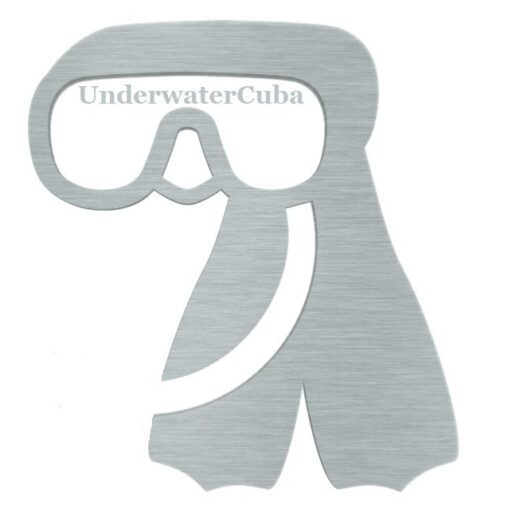Maria la Gorda Diving Center
[su_highlight background=”#3c7ee0″]The diving in Maria la Gorda is expensive since it is done from a boat, the prices are approximately over $90 for 2 dives. You can find cheap dives deals in Varadero Cuba for $ 70 includes 2 dives with transfer included[/su_highlight]

Diving in Maria la Gorda
This is an international diving base on the Guanahacabibes Peninsula. Part of a biosphere reserve south of Pinar del Rio. Has a beach, a cabin complex with restaurant, bar and shops. It is managed by Marinas Puerto Sol. There is also sport fishing, water sports and ecological tourism. It is visited by tourists and scientists from all over the world.
Diving Center
It has 60 beautiful dive sites for the quality of the coral reefs, the most remote is 20 minutes from the jetty. The water is calm and with good visibility, and you can dive between 15 and 35 meters deep. Next to the spot where the continental slope begins, a steep wall of 2000 meters, where virtually all the marine fauna of the Caribbean concentrates. Not recommended for beginners, the best places for beginers is Coral Beach Varadero because have from 6 to 12 meters deep.
History of the name of Maria la gorda:
There are two versions of the character “María la Gorda”, which gives the international diving base its name:
It is claimed that she was an indigenous Venezuelan woman who was forcibly brought and raped by the entire crew of a pirate galleon.
The second version says she was the daughter of a Spanish captain who sank in a hurricane in the area.
According to the data found, María was a woman with large breasts who was classified as a filibuster and grocer. As well as women she offered to pirate ships sailing through the area to protect herself from bad weather or to raid Spanish convoys in transit in this area. As important documents from the archives of Seville in Spain show, more than a hundred galleons are sunk in these seabeds.
Other historical data:
There are also traces of the passage of famous pirates such as the Dutch, Peg Leg and Prejudice, who had experienced the struggle for the distribution of the booty.
Land-based flora and fauna:
María la Gorda has a rich flora and fauna, including various species such as Jocuma, Majagua, Mahogany, Mahogany, Mahogany, Cana Jata and many other endemic plant species. That represent the scenic diversity of one of the country’s largest forest reserves, perhaps the only pristine tropical forest to exist in Cuba. It is one of the great attractions of the region: the combination of jungle and heterogeneous fauna in which they mix:
The water is calm and with good visibility, and you can dive between 15 and 35 meters deep. Next to the spot where the continental slope begins, a steep wall of 2000 meters, where virtually all the marine fauna of the Caribbean concentrates.
The diving area is one of the Cuban protected areas and is within the borders of one of the best and best preserved biosphere reserves in the world. Divers and staff strive to preserve the natural habitat according to established rules. In the developed part there is also care, at the access road to the hotel there are forest guards for the protection of the nature reserve.
Marine Ecosystem:
This diving area has its origins in a chain of landscapes shaped by the waves and ocean currents of the Gulf of Mexico. The coral reefs are well developed and as the sea platform of the region is narrow. They are very close to the coast. From a depth of 5 metres you can observe the large formations of corals, gorgonians and other fixed organisms in which live fish, molluscs, crustaceans, sea turtles, algae and marine phanerogams live.
The edge wall is covered with black coral. Where species of great beauty and size live, such as the stingray, a majestic submarine that is about two meters wide when its fins are elongated and has a very long tail.
It is also common to see the 2 metre long green moray eel that protrudes from the rocks, which has nocturnal habitats. So you can dive at night to see it completely outside the cave. Read more about the coral reef in Cuba
Variety of fish:
Among the fish are groupers, Chernas and other smaller and more colourful ones like the reef Carajuelo. All red and with small white details, and Queen Isabelita, with a combination of blue and yellow, bright yellow spots and with a black spot on the tail to distract the enemy.
In some places it is very common to see the shark, especially the nurse shark, grey shark and bull shark, which do not attack. They are up to two meters long and one can also observe the three species of Caribbean turtles: the loggerhead turtle (up to 200 kilos), the loggerhead turtle and the leatherback turtle (Tortuga), which are tamed.

 Next Post
Next Post